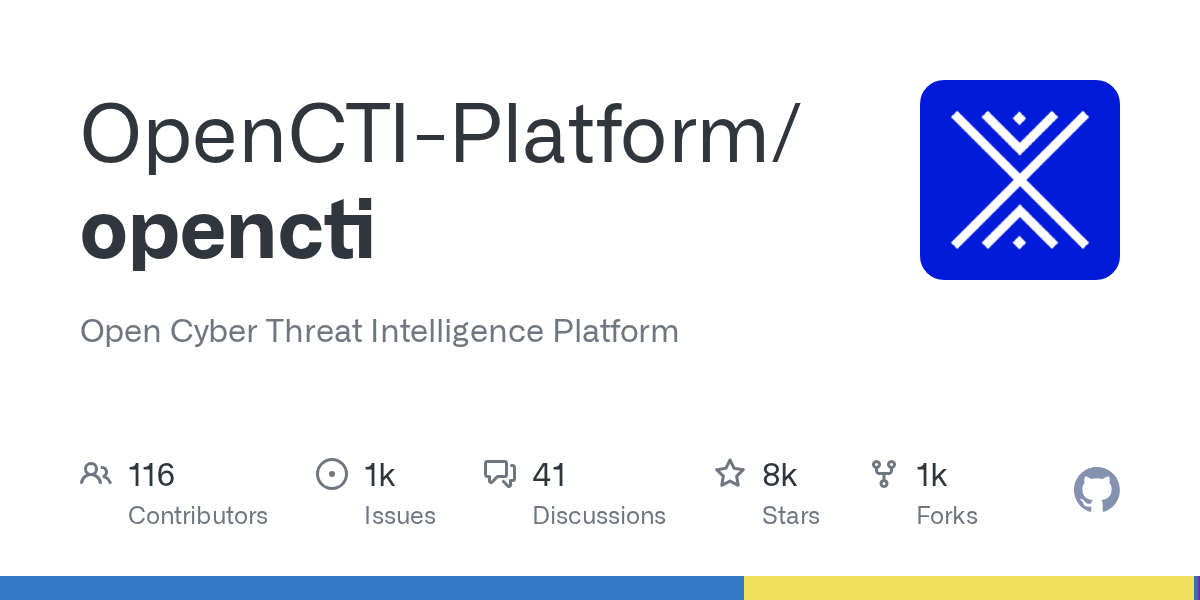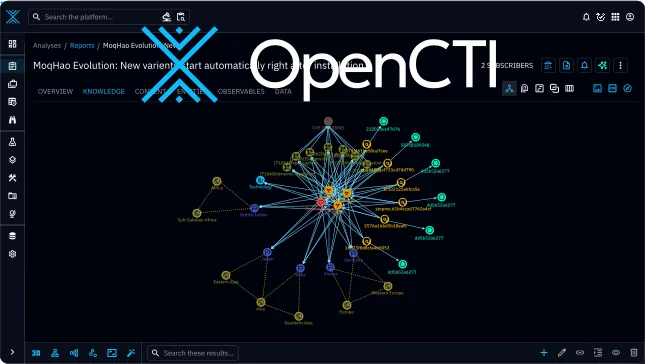OpenCTI: The Open-Source Cyber Threat Intelligence Platform
TL/DR
OpenCTI is an open-source platform designed to help organizations manage their cyber threat intelligence (CTI) data and observables. Developed by Filigran, it uses a knowledge schema built on the STIX2 standards and features a modern web application architecture with a GraphQL API and a user-friendly front end. OpenCTI integrates with other tools like MISP and TheHive, making it a central hub for cyber threat intelligence management. The platform ensures data traceability, interlinks data points, tracks first and last-seen dates, assesses confidence levels, and more. It is integrated with the MITRE ATT&CK framework and is available for free on GitHub.
What is OpenCTI?
In the ever-evolving landscape of cybersecurity, staying ahead of threats is crucial. OpenCTI, an open-source platform developed by Filigran, is designed to help organizations manage their cyber threat intelligence (CTI) data and observables effectively. This platform structures its data using a knowledge schema built on the STIX2 standards, ensuring that every piece of information is traceable back to its source.
OpenCTI features a modern web application architecture with a GraphQL API and a user-friendly front end. This architecture not only makes the platform accessible but also ensures that it can handle complex queries and data interactions efficiently. The GraphQL API allows for flexible and efficient data retrieval, making it easier for users to interact with the platform.
Integration and Capabilities
One of the standout features of OpenCTI is its ability to integrate with other tools and applications, such as MISP and TheHive. This integration enhances its capability to serve as a central hub for cyber threat intelligence management. By connecting with these tools, OpenCTI can aggregate data from multiple sources, providing a comprehensive view of the threat landscape.
The platform offers several key features that make it a powerful tool for cyber threat intelligence management. These include interlinking data points, tracking first and last-seen dates, assessing confidence levels, and more. The tool is also integrated with the MITRE ATT&CK framework via a dedicated connector, which assists in structuring the data. However, users can also incorporate their datasets, making the platform highly customizable.
Data Processing and Visualization
Once analysts within OpenCTI have processed and curated the data, the tool can infer new relationships from the existing ones. This capability enhances the understanding and visualization of the information, empowering users to extract valuable insights and leverage meaningful knowledge from the raw data. The platform's ability to visualize data and infer relationships makes it an invaluable tool for threat intelligence analysts.
For example, if an analyst identifies a new threat, OpenCTI can help visualize how this threat relates to other known threats, providing a holistic view of the threat landscape. This visualization can help organizations prioritize their response efforts and allocate resources more effectively.
Deployment and Availability
OpenCTI is available for free on GitHub. All components are shipped as Docker images and manual installation packages. For a production deployment, the developers recommend deploying all components in containers, including dependencies, using native cloud services or orchestration systems such as Kubernetes. This approach ensures that the platform is scalable, reliable, and easy to manage.
Here is an example of how you can deploy OpenCTI using Docker Compose:
How to install OpenCTI
(It's basically git clone https://github.com/OpenCTI-Platform/docker.git and setting up your .env)
Tooling for DevSecOps
OpenCTI is a powerful open-source platform that helps organizations manage their cyber threat intelligence data effectively. With its modern architecture, integration capabilities, and advanced features, it serves as a central hub for cyber threat intelligence management. The platform's ability to visualize data and infer relationships makes it an invaluable tool for threat intelligence analysts. Available for free on GitHub, OpenCTI is a must-have for any organization looking to enhance its cybersecurity posture.
Links to Resources
Source:

Related content

Atención!: Vulnerabilidades Críticas en React y Next.js: Revisa si tus proyectos son vulnerables
En resumen: * CVE-2025-55182 (React) y CVE-2025-66478 (Next.js) son vulnerabilidades críticas de RCE (Ejecución Remota de Código) no autenticadas en el protocolo "Flight" de React Server Components (RSC). * Las configuraciones por defecto son vulnerables: una aplicación estándar de Next.js creada con create-next-app y compilada para producción puede
Read the full post →

sudo's latest "trick": when chroot and nsswitch conspire against you (cve-2025-32462)
Ah, sudo. The trusty command that grants mere mortals the power of a deity (root, that is) on a Linux system. It's the gatekeeper, the bouncer, the one program we all implicitly trust to elevate our privileges without turning our beloved machine into a digital wasteland. And precisely
Read the full post →
- Register with Email



